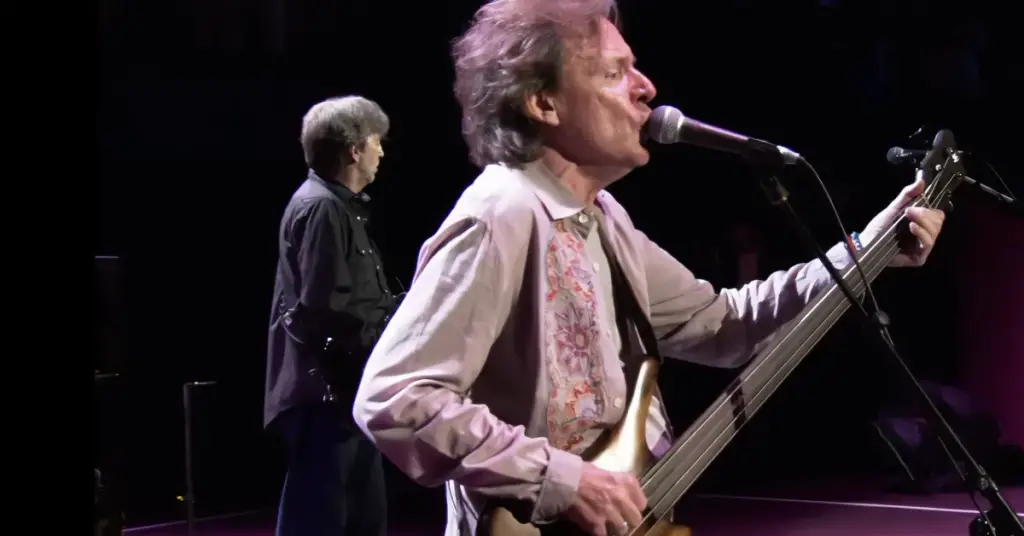Cream – “White Room”: Psychedelic Shadows in a Cathedral of Sound
When Cream released “White Room” in 1968, they weren’t just the first great power trio of rock — they were pushing the genre’s boundaries with a mix of blues fire, classical ambition, and psychedelic moodiness. And nowhere is that blend more potent than in “White Room,” a song that feels like a fever dream wrapped in thunder and poetry.
Featured on their final studio album, Wheels of Fire, “White Room” became one of Cream’s signature tracks and remains a definitive moment of late-60s rock experimentation. It’s heavy and haunted, theatrical and thunderous — and utterly unforgettable.
The Sound: Gothic Psychedelia in Technicolor
“White Room” opens with an ominous, droning viola intro (courtesy of producer Felix Pappalardi) before launching into one of the most iconic guitar riffs in rock history.
- Eric Clapton’s wah-wah guitar snarls with eerie elegance, giving the song its restless pulse.
- Jack Bruce’s vocals and melodic basslines are intense and brooding, driving the emotional undercurrent.
- Ginger Baker’s drumming is forceful, inventive, and rhythmically complex — propelling the track with jazz-influenced power.
The song’s use of unusual time signatures, particularly the 5/4 intro shifting to 4/4, gives it an unsettling, off-kilter feel — like walking through a dream you can’t quite escape.
It’s psychedelic rock, but not in the sunshine-drenched way of some contemporaries. This is psychedelia filtered through isolation, shadows, and thunderclouds.
The Lyrics: Abstract Poetry and Emotional Isolation
“In the white room with black curtains near the station…”
The lyrics — written by poet Pete Brown, with music by Jack Bruce — are abstract and surreal, evoking imagery that’s open to interpretation. It’s part gothic tale, part breakup lament, part internal monologue.
Brown once described it as a song about a bad relationship and emotional estrangement, with the “white room” symbolizing a sterile, empty space of isolation and disillusionment.
“You said no strings could secure you at the station…”
Like much great psychedelic poetry, the song works more on emotional resonance than literal clarity. It paints moods — longing, regret, bitterness — in shades of grey and black.
Clapton’s Guitar Work: Wah-Wah Wonder
Clapton’s use of the wah-wah pedal in “White Room” was groundbreaking at the time and remains one of his most recognizable performances. It adds a vocal, crying tone to the guitar — perfectly matching the song’s emotional and lyrical tension.
The solos don’t just fill space; they carry meaning, acting as a kind of unspoken counterpart to the lyrics. The guitar sings, moans, even growls — turning frustration into melody.
Chart Success and Cultural Impact
“White Room” became one of Cream’s biggest hits, reaching:
- #6 on the Billboard Hot 100 (U.S.)
- Top 10 in several countries
- Enduring status as one of the great psychedelic rock tracks of the era
It was Cream’s final major hit before disbanding later in 1968. But what a way to go out — with a song that felt both like a culmination and a farewell.
Since then, “White Room” has been used in films, covered by numerous artists, and remains a staple of classic rock radio. It still feels urgent and mysterious — a song that never quite gives up all its secrets.
Legacy: The Sound of a Beautiful Breakdown
“White Room” stands as a towering achievement in late-60s rock — a track that combines virtuosic playing, haunting poetry, and bold experimentation. It’s moody, it’s massive, and it’s magnificent.
A room with no clear exits.
A melody full of shadows.
A song that echoes long after it ends.
Final Thoughts
“White Room” is psychedelic rock with a soul and a storm inside.
It’s not about clarity — it’s about atmosphere.
Not about resolution — but about how it feels when everything comes unglued.
In less than five minutes, Cream created a sonic cathedral where guitar gods, jazz drummers, and poet-lyricists could all speak the same language — and it still resonates in every dark hallway of rock and roll.



Facebook Comments